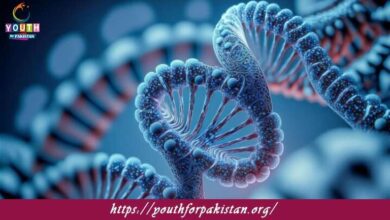11th Class Chemistry Chapter 3 MCQs with Answers

Explore gas laws with Gases MCQs covering Boyle’s law, Charles’ law, and kinetic molecular theory. These Chapter 3 quizzes enhance your understanding for 11th Class Chemistry.
Which of the following is not a characteristic of gases?
a) Definite shape
b) Low density
c) Compressibility
d) Rapid diffusion
The SI unit of pressure is:
a) Pascal
b) Newton
c) Joule
d) Watt
Which gas law states that the pressure of a given mass of gas is inversely proportional to its volume at constant temperature?
a) Boyle’s law
b) Charles’s law
c) Avogadro’s law
d) Gay-Lussac’s law
The volume of a given mass of gas is directly proportional to its absolute temperature at constant pressure. This statement represents:
a) Boyle’s law
b) Charles’s law
c) Avogadro’s law
d) Gay-Lussac’s law
According to Avogadro’s law, equal volumes of different gases at the same temperature
and pressure contain an equal number of:
a) Molecules
b) Atoms
c) Electrons
d) Protons
Which gas law states that the pressure of a given mass of gas is directly proportional to its absolute temperature at constant volume?
a) Boyle’s law
b) Charles’s law
c) Avogadro’s law
d) Gay-Lussac’s law
The ideal gas equation is given as PV = nRT. What does “R” represent in this equation?
a) Relative humidity
b) Universal gas constant
c) Gas density
d) Gas solubility
At constant temperature and pressure, the volume of a gas is directly proportional to the number of molecules. This statement represents:
a) Boyle’s law
b) Charles’s law
c) Avogadro’s law
d) Gay-Lussac’s law
The pressure exerted by a gas is due to the:
a) Mass of gas molecules
b) Velocity of gas molecules
c) Frequency of gas molecule collisions with the container walls
d) Size of gas molecules
Which gas law combines Boyle’s law, Charles’s law, and Gay-Lussac’s law into one equation?
a) Ideal gas law
b) Combined gas law
c) Dalton’s law
d) Graham’s law
The pressure of a gas is measured in:
a) Kelvin
b) Joules
c) Newtons
d) Pascals
Which gas law describes the relationship between the pressure and volume of a gas at constant temperature?
a) Boyle’s law
b) Charles’s law
c) Avogadro’s law
d) Gay-Lussac’s law
According to Charles’s law, the volume of a gas is directly proportional to its:
a) Pressure
b) Temperature
c) Number of moles
d) Density
The volume occupied by one mole of any gas at standard temperature and pressure (STP)
is approximately:
a) 22.4 L
b) 44.8 L
c) 11.2 L
d) 33.6 L
The behavior of real gases deviates from ideal behavior at:
a) Low temperatures and high pressures
b) Low temperatures and low pressures
c) High temperatures and low pressures
d) High temperatures and high pressures
The temperature at which the gaseous state of a substance changes into its liquid state at atmospheric pressure is called:
a) Melting point
b) Boiling point
c) Condensation point
d) Sublimation point
The pressure exerted by a gas is directly proportional to its:
a) Volume
b) Temperature
c) Number of moles
d) Density
The density of a gas is inversely proportional to its:
a) Pressure
b) Temperature
c) Volume
d) Number of moles
The process of conversion of a gas into its liquid state is called:
a) Evaporation
b) Sublimation
c) Condensation
d) Vaporization
The gas law that describes the behavior of real gases under high pressure and low temperature is:
a) Boyle’s law
b) Charles’s law
c) Avogadro’s law
d) Vander Waals equation
The volume of a gas is directly proportional to its temperature in Kelvin at constant pressure. This statement represents:
a) Boyle’s law
b) Charles’s law
c) Avogadro’s law
d) Gay-Lussac’s law
The pressure of a gas is directly proportional to its temperature in Kelvin at constant volume. This statement represents:
a) Boyle’s law
b) Charles’s law
c) Avogadro’s law
d) Gay-Lussac’s law
The temperature at which the solid state of a substance changes into its gaseous state at atmospheric pressure is called:
a) Melting point
b) Boiling point
c) Condensation point
d) Sublimation point
The process of conversion of a solid directly into its gaseous state without passing through the liquid state is called:
a) Evaporation
b) Sublimation
c) Condensation
d) Vaporization
The total pressure exerted by a mixture of gases is equal to the sum of the partial pressures of each gas. This statement represents:
a) Boyle’s law
b) Charles’s law
c) Dalton’s law
d) Gay-Lussac’s law
The process of conversion of a liquid into its gaseous state at any temperature below its boiling point is called:
a) Evaporation
b) Sublimation
c) Condensation
d) Vaporization
The pressure exerted by a gas is directly proportional to its temperature in Kelvin at constant volume. This statement represents:
a) Boyle’s law
b) Charles’s law
c) Avogadro’s law
d) Gay-Lussac’s law
The SI unit of temperature is:
a) Pascal
b) Kelvin
c) Joule
d) Watt
The temperature at which the liquid state of a substance changes into its solid state at atmospheric pressure is called:
a) Melting point
b) Boiling point
c) Condensation point
d) Sublimation point
The process of conversion of a gas into its liquid state is called:
a) Evaporation
b) Sublimation
c) Condensation
d) Vaporization
The pressure of a gas is directly proportional to its temperature in Kelvin at constant volume. This statement represents:
a) Boyle’s law
b) Charles’s law
c) Avogadro’s law
d) Gay-Lussac’s law
The temperature at which the gaseous state of a substance changes into its solid state at atmospheric pressure is called:
a) Melting point
b) Boiling point
c) Condensation point
d) Sublimation point
The process of conversion of a solid directly into its gaseous state without passing through the liquid state is called:
a) Evaporation
b) Sublimation
c) Condensation
d) Vaporization
The total pressure exerted by a mixture of gases is equal to the sum of the partial pressures of each gas. This statement represents:
a) Boyle’s law
b) Charles’s law
c) Dalton’s law
d) Gay-Lussac’s law
The process of conversion of a liquid into its gaseous state at any temperature below its boiling point is called:
a) Evaporation
b) Sublimation
c) Condensation
d) Vaporization
The pressure exerted by a gas is directly proportional to its temperature in Kelvin at constant volume. This statement represents:
a) Boyle’s law
b) Charles’s law
c) Avogadro’s law
d) Gay-Lussac’s law
The SI unit of temperature is:
a) Pascal
b) Kelvin
c) Joule
d) Watt
The temperature at which the liquid state of a substance changes into its solid state at atmospheric pressure is called:
a) Melting point
b) Boiling point
c) Condensation point
d) Sublimation point
The process of conversion of a gas into its liquid state is called:
a) Evaporation
b) Sublimation
c) Condensation
d) Vaporization
The pressure of a gas is directly proportional to its temperature in Kelvin at constant volume. This statement represents:
a) Boyle’s law
b) Charles’s law
c) Avogadro’s law
d) Gay-Lussac’s law
The temperature at which the gaseous state of a substance changes into its solid state at atmospheric pressure is called:
a) Melting point
b) Boiling point
c) Condensation point
d) Sublimation point
The process of conversion of a solid directly into its gaseous state without passing through the liquid state is called:
a) Evaporation
b) Sublimation
c) Condensation
d) Vaporization
The total pressure exerted by a mixture of gases is equal to the sum of the partial pressures of each gas. This statement represents:
a) Boyle’s law
b) Charles’s law
c) Dalton’s law
d) Gay-Lussac’s law
The process of conversion of a liquid into its gaseous state at any temperature below its boiling point is called:
a) Evaporation
b) Sublimation
c) Condensation
d) Vaporization
The pressure exerted by a gas is directly proportional to its temperature in Kelvin at constant volume. This statement represents:
a) Boyle’s law
b) Charles’s law
c) Avogadro’s law
d) Gay-Lussac’s law
The SI unit of temperature is:
a) Pascal
b) Kelvin
c) Joule
d) Watt
The temperature at which the liquid state of a substance changes into its solid state at atmospheric pressure is called:
a) Melting point
b) Boiling point
c) Condensation point
d) Sublimation point
The process of conversion of a gas into its liquid state is called:
a) Evaporation
b) Sublimation
c) Condensation
d) Vaporization
The pressure of a gas is directly proportional to its temperature in Kelvin at constant volume. This statement represents:
a) Boyle’s law
b) Charles’s law
c) Avogadro’s law
d) Gay-Lussac’s law
The temperature at which the gaseous state of a substance changes into its solid state at atmospheric pressure is called:
a) Melting point
b) Boiling point
c) Condensation point
d) Sublimation point
The process of conversion of a solid directly into its gaseous state without passing through the liquid state is called:
a) Evaporation
b) Sublimation
c) Condensation
d) Vaporization
The total pressure exerted by a mixture of gases is equal to the sum of the partial pressures of each gas. This statement represents:
a) Boyle’s law
b) Charles’s law
c) Dalton’s law
d) Gay-Lussac’s law
The process of conversion of a liquid into its gaseous state at any temperature below its boiling point is called:
a) Evaporation
b) Sublimation
c) Condensation
d) Vaporization
The pressure exerted by a gas is directly proportional to its temperature in Kelvin at constant volume. This statement represents:
a) Boyle’s law
b) Charles’s law
c) Avogadro’s law
d) Gay-Lussac’s law
The SI unit of temperature is:
a) Pascal
b) Kelvin
c) Joule
d) Watt
The temperature at which the liquid state of a substance changes into its solid state at atmospheric pressure is called:
a) Melting point
b) Boiling point
c) Condensation point
d) Sublimation point
The process of conversion of a gas into its liquid state is called:
a) Evaporation
b) Sublimation
c) Condensation
d) Vaporization
The pressure of a gas is directly proportional to its temperature in Kelvin at constant volume. This statement represents:
a) Boyle’s law
b) Charles’s law
c) Avogadro’s law
d) Gay-Lussac’s law
The temperature at which the gaseous state of a substance changes into its solid state at atmospheric pressure is called:
a) Melting point
b) Boiling point
c) Condensation point
d) Sublimation point
The process of conversion of a solid directly into its gaseous state without passing through the liquid state is called:
a) Evaporation
b) Sublimation
c) Condensation
d) Vaporization
If you are interested to enhance your knowledge regarding Physics, Chemistry, Biology, and Computer please click on the link of each category, you will be redirected to dedicated website for each category.





